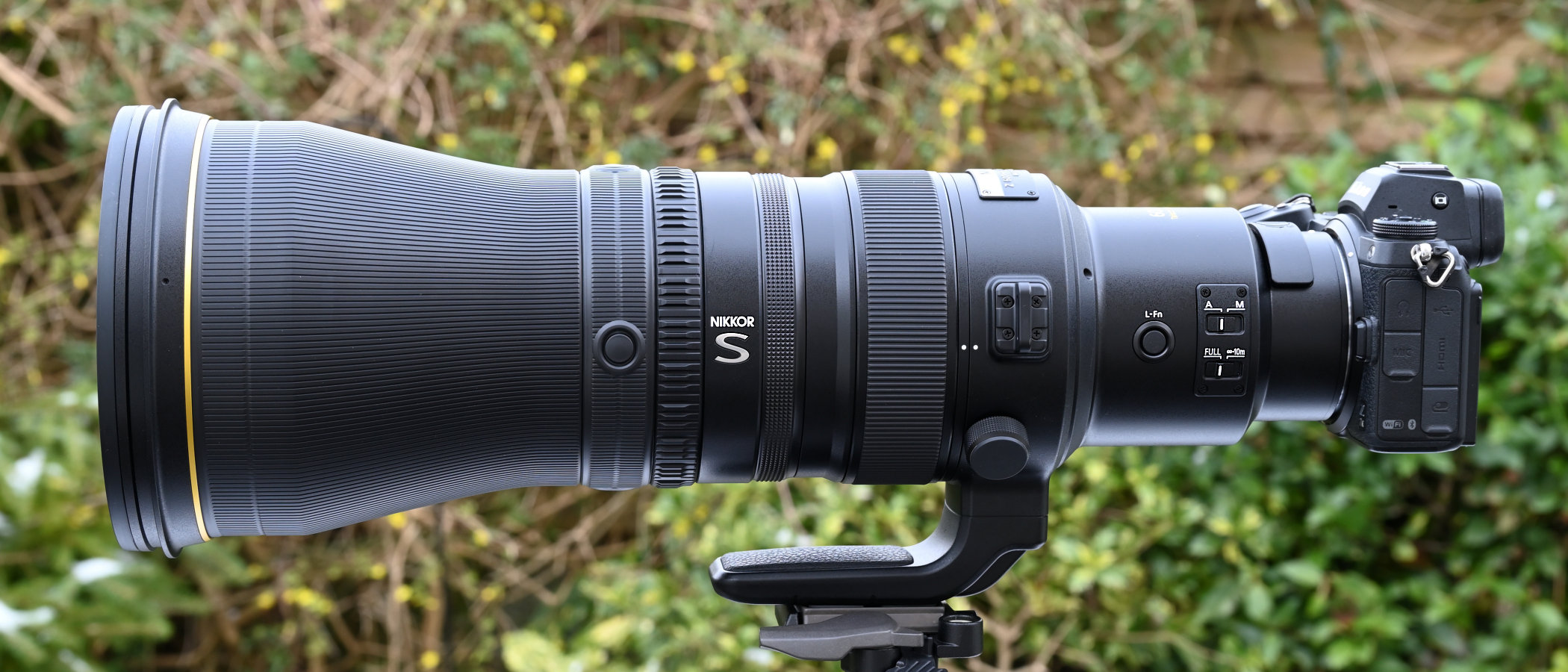Digital Camera World Verdict
Weighing in at a couple of pounds more than the Nikon Z 800mm f/6.3 VR S and costing more than twice the price, the Z 600mm with its built-in teleconverter isn’t a lens to be taken lightly. At 3,260g, it’s a bit of a beast but has a ton of handling exotica and the 1.4x teleconverter can be engaged or disengaged at the flip of a lever. Image quality is exemplary at 600mm and while it remains impressive at 840mm when calling the teleconverter into play, we did suffer a loss of sharpness towards the close end of the focus range.
Pros
- +
Built-in 1.4x teleconverter
- +
Refined handling
- +
Great performance at 600mm
Cons
- -
Big and heavy
- -
Hugely expensive
- -
Loss of close-range sharpness at 840mm
Why you can trust Digital Camera World
The Nikon Z 600mm f/4 TC VR S follows in the highly capable and very expensive footsteps of the Z 400mm f/2.8 TC VR S. Unsurprisingly, the 50 per cent longer native focal length comes with a reduction in aperture speed, from f/2.8 to f/4, narrowing to f/5.6 with the built-in teleconverter engaged. This extends the focal length to a mighty 840mm. However, while the internal teleconverter undeniably adds versatility, enabling you to switch between two focal lengths at the flip of a lever, the lens is up against the Z 100-400mm f/4.5-5.6 VR S and the Z 800mm f/6.3 VR S, both of which are more lightweight and more affordable to buy. Indeed, the Z 600mm TC is nearly six times the price of the Z 800mm.
Specifications
Mount: Nikon Z
Full frame: Yes
Autofocus: Yes
Stabilization: Yes
Lens construction: 26 elements in 20 groups
Angle of view: 4.2 / 3 degrees
Diaphragm blades: 9
Minimum aperture: f/32 / 45
Minimum focusing distance: 4.3m
Maximum magnification ratio: 0.14x / 0.2x
Filter size: Rear, drop-in
Dimensions: 165x437mm
Weight: 3,260g
Key features
There’s a lot of glass packed into this lens, comprising 26 elements arranged in 20 groups, although that includes seven elements in four groups for the teleconverter. Two fluorite elements big up the quality while offering a bit of weight-saving, although the lens is still a real heavyweight at 3,260g. Further finery in the optical path includes three ED (Extra-low Dispersion) elements, one Super-ED element and two SR (Short-wavelength Refractive) elements. The combination aims to minimize chromatic aberrations and coma, while boosting clarity.
Coatings include Nikon’s now common ARNEO and Nano Crystal Coat, plus a more recently developed Meso Amorphous Coat, which is particularly effective in cutting diagonal and vertical incidental light, thus minimizing ghosting and flare and enhancing contrast and color rendition when shooting into the light.
Naturally, the integral 1.4x teleconverter is a key feature. Being able to engage or disengage the teleconverter by simply flipping a lever makes the process super-speedy, compared with removing the lens from the camera, adding a separate teleconverter, and refitting it. It also avoids the risk of dust entering the camera when shooting in inclement environments. When engaged, the lens effectively becomes an 840mm f/5.6 optic.
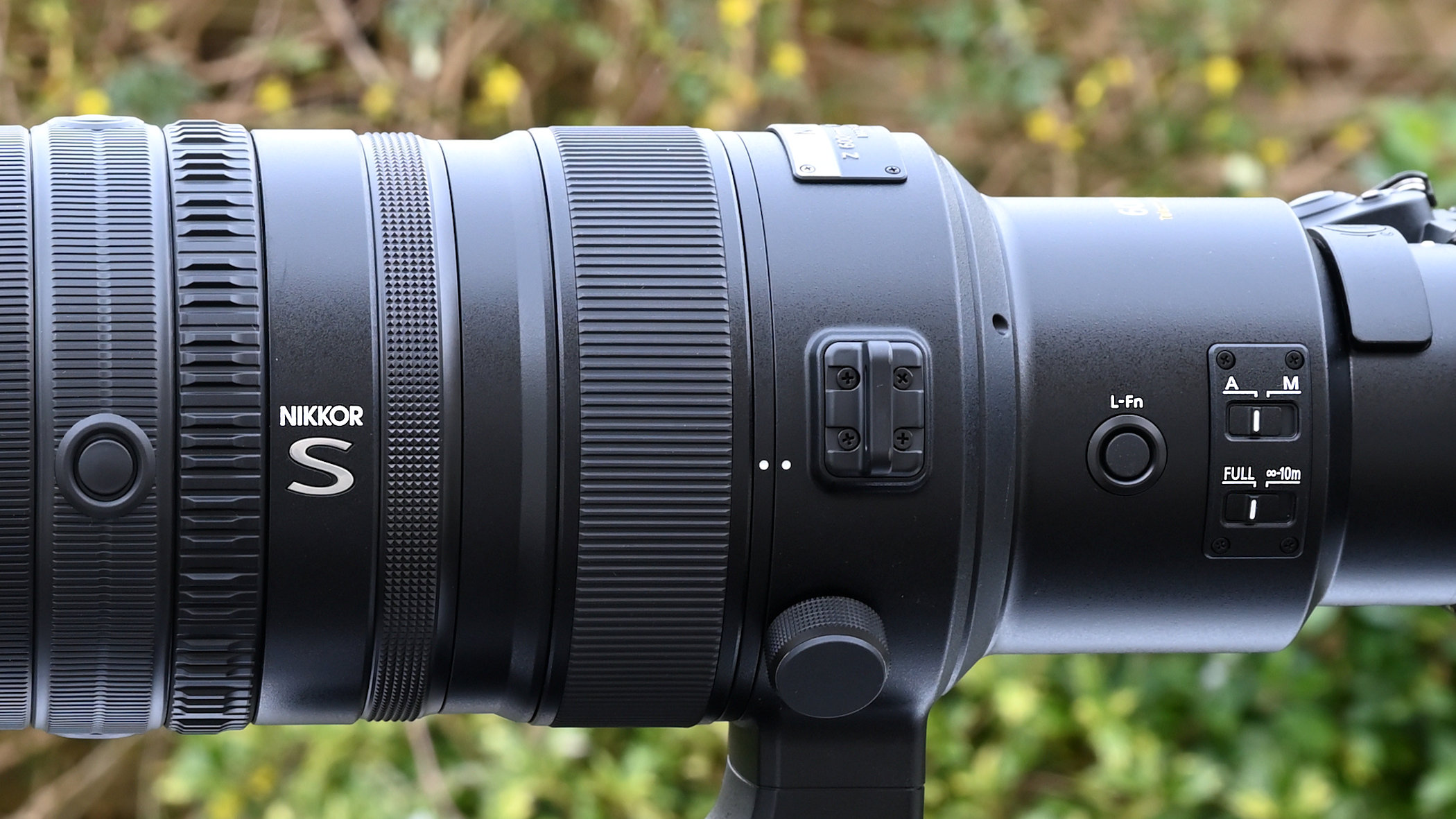
Autofocus is courtesy of a Silky Swift Voice Coil Motor, or VCM, which uses magnetic attraction instead of gears for super-fast, highly accurate performance in almost complete silence. 5-stop optical VR (Vibration Reduction) is featured, which gives a 5.5-stop overall benefit when used in Synchro VR mode with additional in-body stabilization, as featured in the Z 6II, Z 7II and Z9 cameras with current firmware.
Build and handling
Build quality is excellent, as you’d expect for a lens costing this much to buy. All joints in the robust magnesium alloy casing are weather-sealed, as is the mounting plate. Fluorine coatings on the front and rear elements are also featured to repel moisture and grease, and to aid easy cleaning.
Although the lens is undeniably heavy, the inclusion of two fluorite glass elements helps to lighten the front end and centralize the weight. Handling is further enhanced by an intuitive control layout that features two independent Lens-function buttons, the latter of which is a gang of four separate buttons around the circumference of the lens. Their functions are easily customizable via in-camera menus, as is the programmable control ring, which supplements the electronically coupled focus ring. There’s also a Memory Set button for storing preset focus distances.
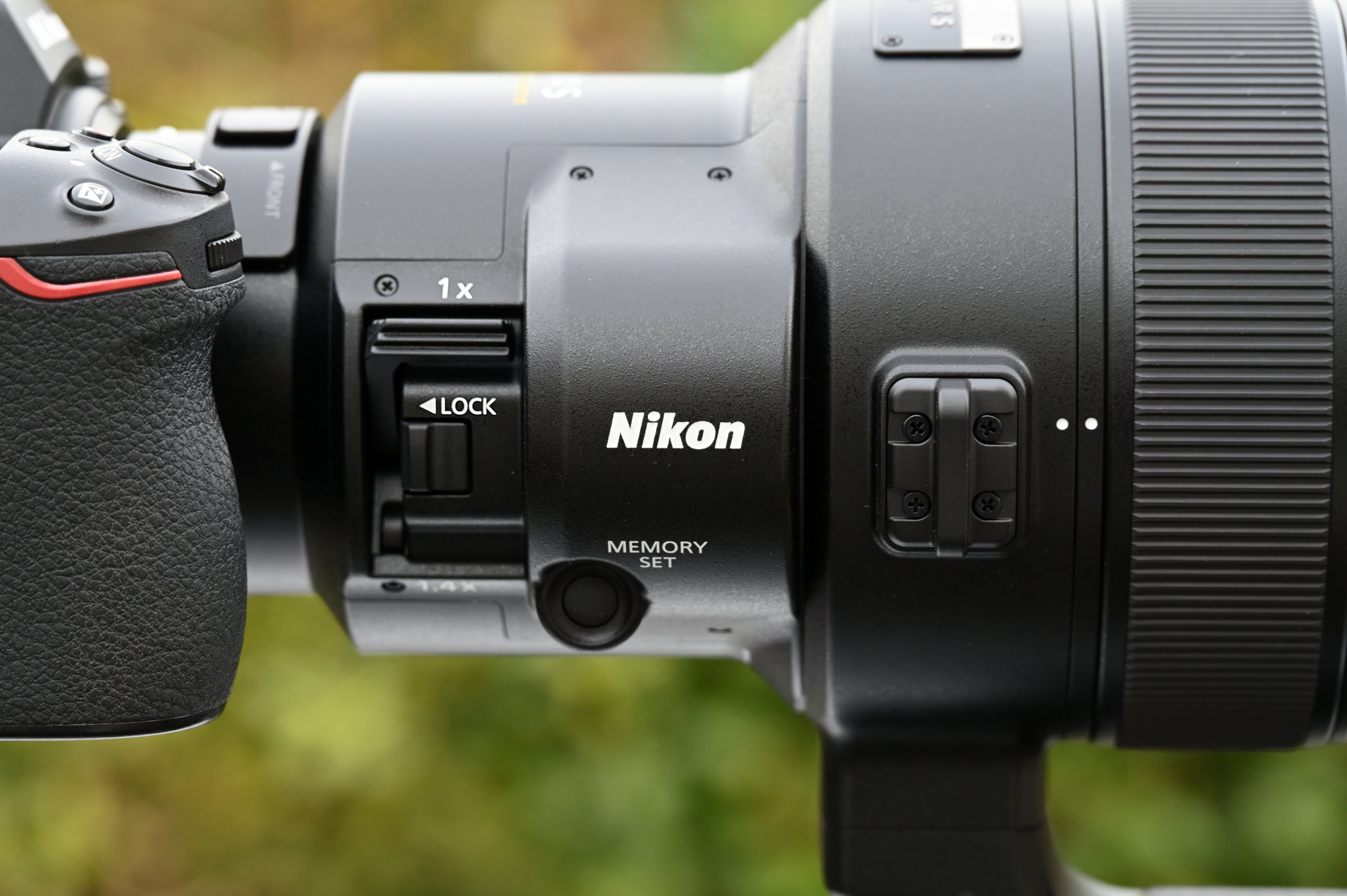
For security, a Kensington lock is featured, and the lens is supplied complete with a padded soft case that has a shoulder strap. And if you feel that a focal length of 840mm still doesn’t cover the distance, the lens is compatible with Nikon’s Z-mount 1.4x and 2x Z-system teleconverters for bumping it up to 1176mm or 1680mm respectively, albeit with a further 1-stop or 2-stop aperture reduction.
Performance
Performance is mostly excellent. At 600mm, the lens is super-sharp from the center of the frame right out to the extreme edges, even when shooting wide-open at f/4. Autofocus is dizzyingly fast and VR lives up to its 5/5.5-stop billing. Color fringing is entirely negligible at all aperture settings, even at the extreme edges and corners of the frame, and there’s only a smidge of barrel distortion.
In our tests at 840mm with the 1.4x teleconverter engaged, lab-results for sharpness based on close-range test charts were frankly poor. That certainly wasn’t the case when we tested the smaller Z 400mm f/2.8 TC VR S, which retained superb sharpness with the teleconverter employed. In our real-world tests, we also found that close-range sharpness was a little lackluster towards the short end of the focus range. However, at longer shooting distances more typical of the type of action, sports, and wildlife photography for which the lens is ideal, sharpness holds up very well at 840mm. Further upsides are that there’s only a minor increase in color fringing and pincushion distortion is fairly minimal.
Sample images
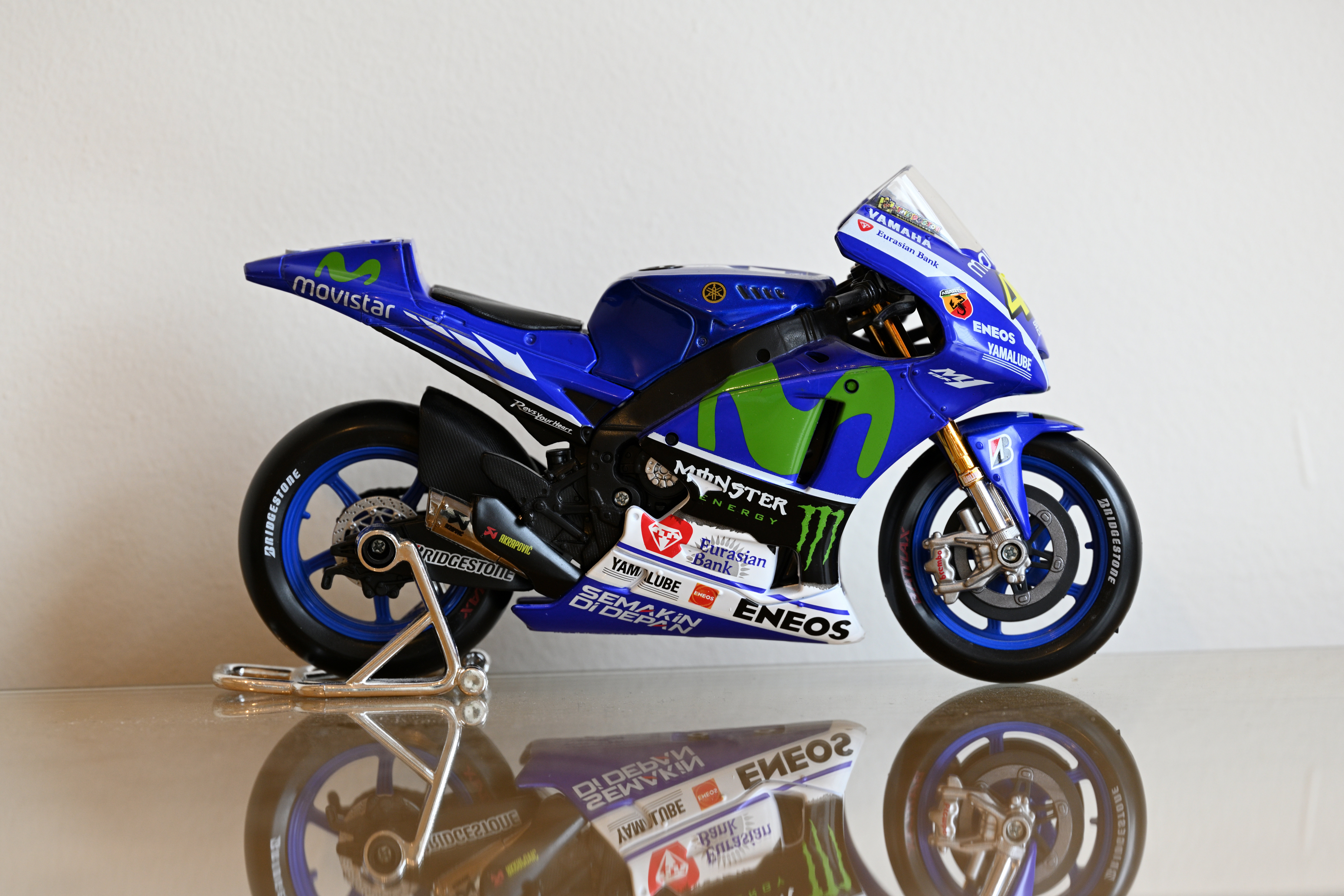
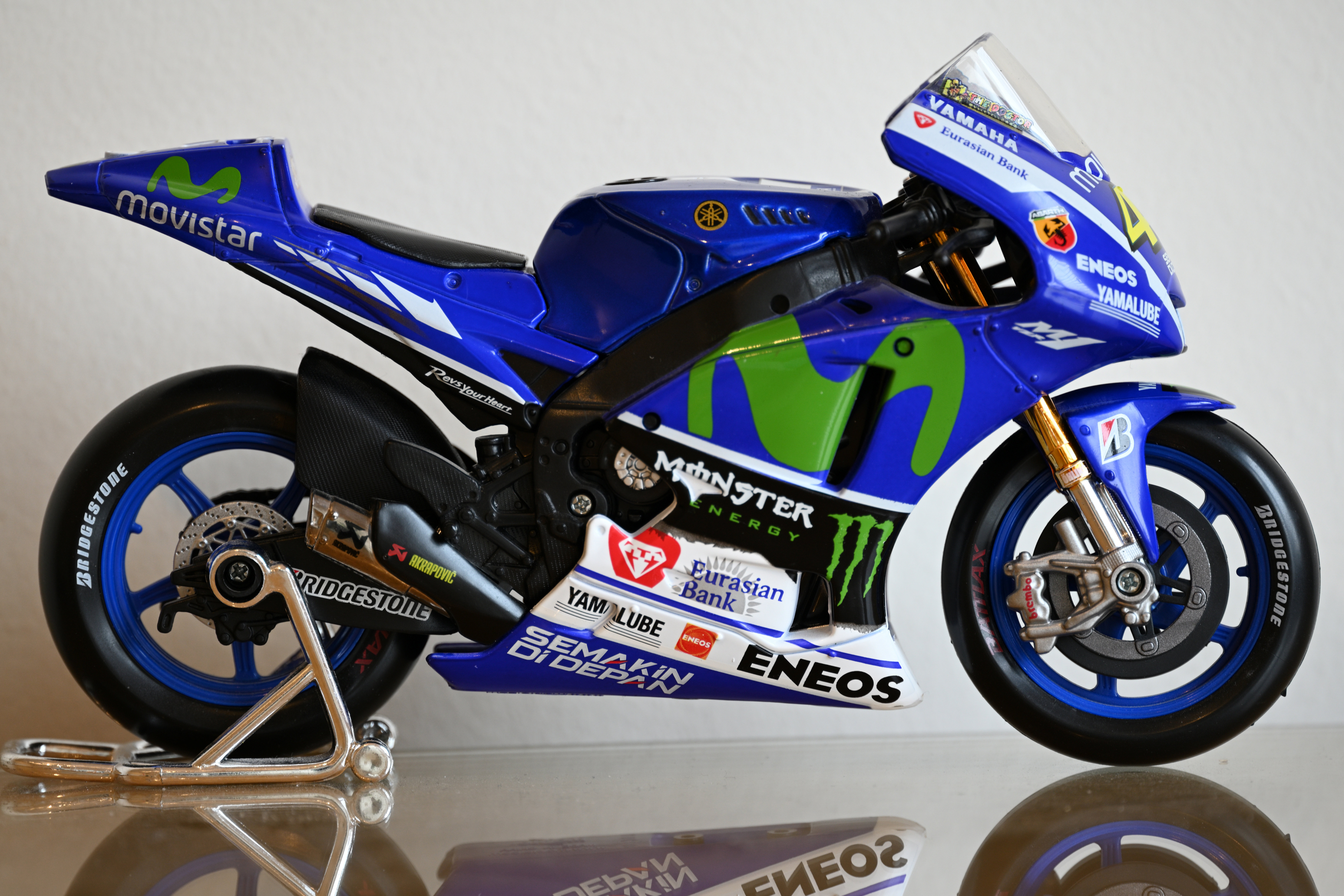





Lab results
We run a range of lab tests under controlled conditions, using the Imatest Master testing suite. Photos of test charts are taken across the range of apertures and zooms (where available), then analyzed for sharpness, distortion and chromatic aberrations.
We use Imatest SFR (spatial frequency response) charts and analysis software to plot lens resolution at the center of the image frame, corners and mid-point distances, across the range of aperture settings and, with zoom lenses, at four different focal lengths. The tests also measure distortion and color fringing (chromatic aberration).
Sharpness:
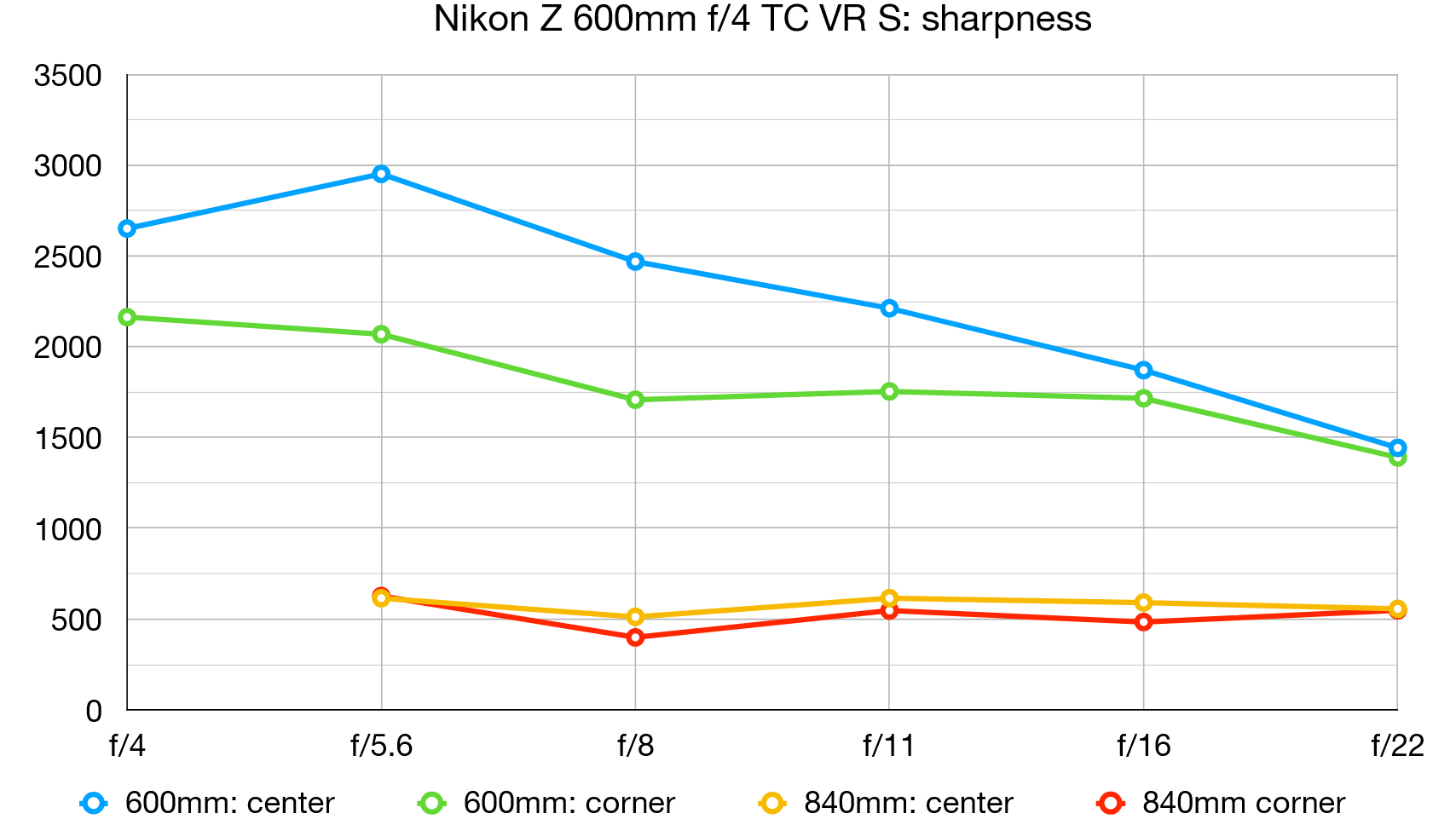
Based on shooting fairly small test charts at close range, levels of sharpness are superb across the entire image frame, even when shooting wide-open at 600mm. In these conditions, however, sharpness takes a nosedive when boosting the focal length to 840mm by engaging the built-in teleconverter.
Fringing:
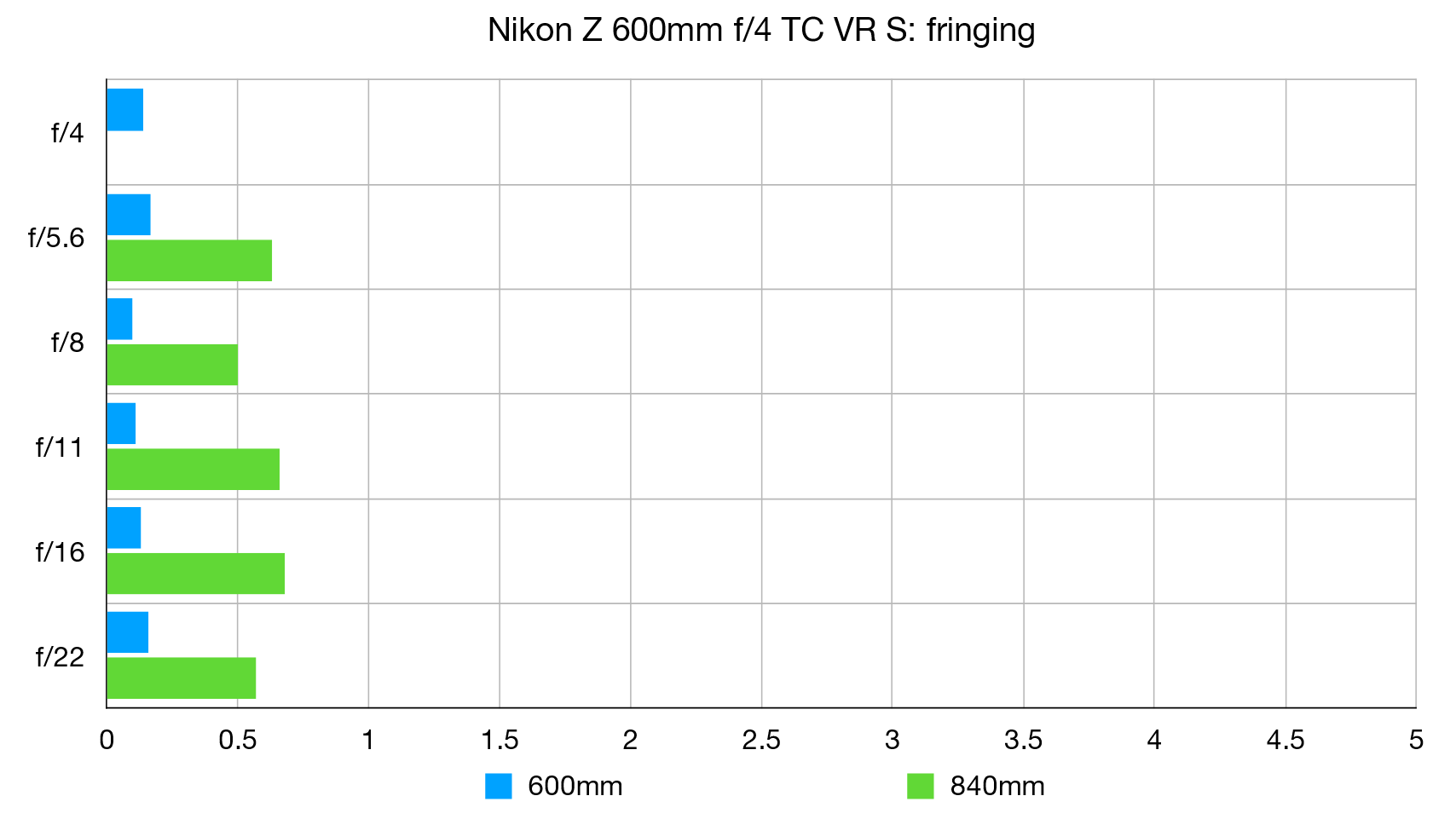
Color fringing is entirely negligible at 600mm, throughout the entire aperture range, even at the extreme edges and corners of the image frame. It’s still very minimal at 860mm with the teleconverter in place.
Distortion:
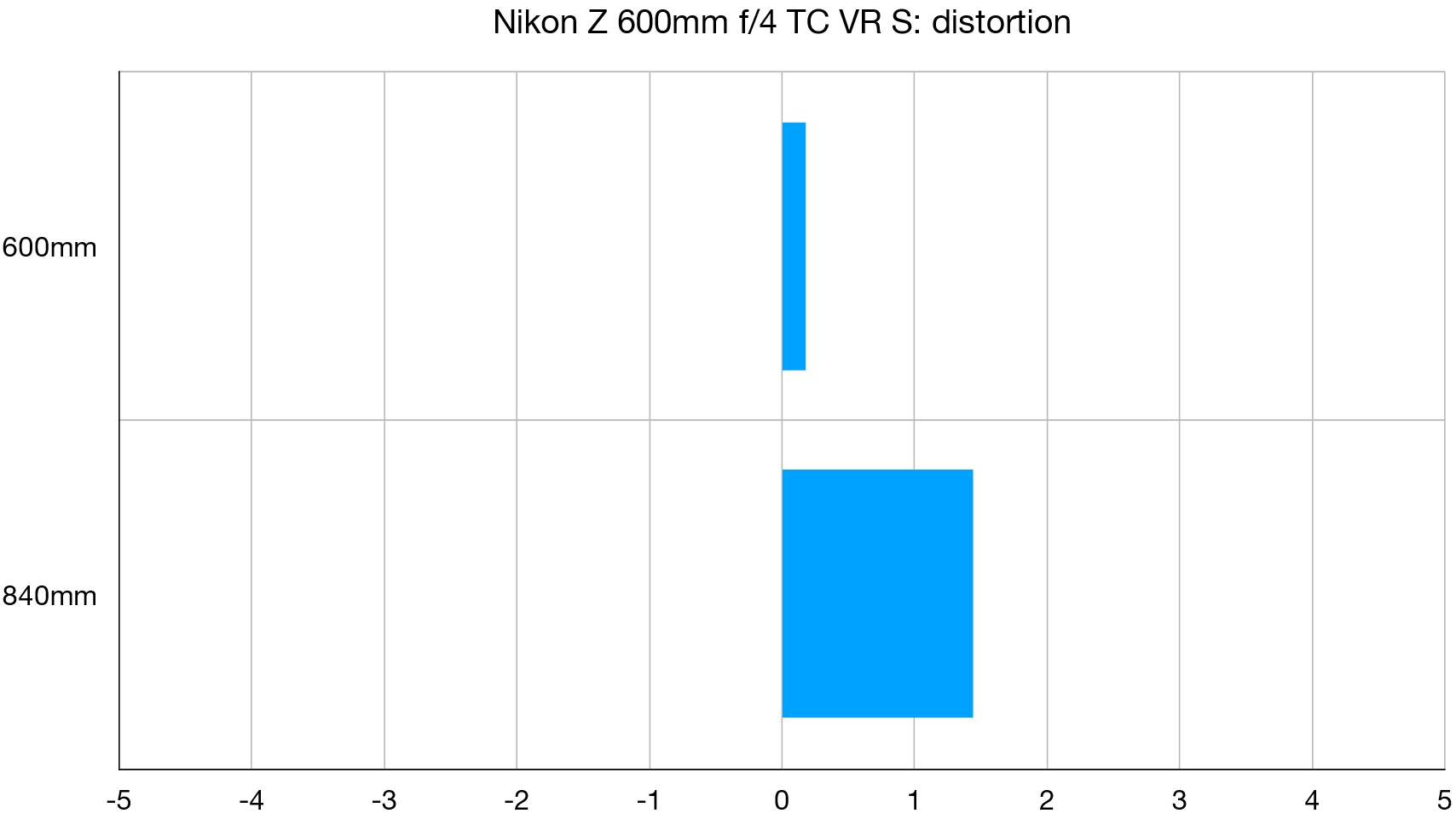
There’s just the merest hint of barrel distortion at 600mm which will generally go completely unnoticed. Slight pincushion can be perceptible at 840mm but in-camera correction is available.
Verdict
Weighing in at a couple of pounds more than the Nikon Z 800mm f/6.3 VR S and costing more than twice the price, the Z 600mm with its built-in teleconverter isn’t a lens to be taken lightly. At 3,260g, it’s a bit of a beast but has a ton of handling exotica and the 1.4x teleconverter can be engaged or disengaged at the flip of a lever. Image quality is exemplary at 600mm and while it remains impressive at 840mm when calling the teleconverter into play, we did suffer a loss of sharpness towards the close end of the focus range.
Read more:
• Best camera lenses to get
• Best Nikon lenses
• Best Nikon Z lenses
• Nikon Z lens roadmap
Matthew Richards is a photographer and journalist who has spent years using and reviewing all manner of photo gear. He is Digital Camera World's principal lens reviewer – and has tested more primes and zooms than most people have had hot dinners!
His expertise with equipment doesn’t end there, though. He is also an encyclopedia when it comes to all manner of cameras, camera holsters and bags, flashguns, tripods and heads, printers, papers and inks, and just about anything imaging-related.
In an earlier life he was a broadcast engineer at the BBC, as well as a former editor of PC Guide.
